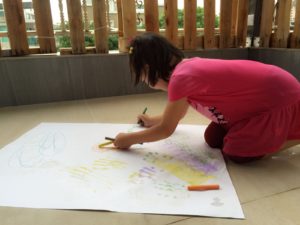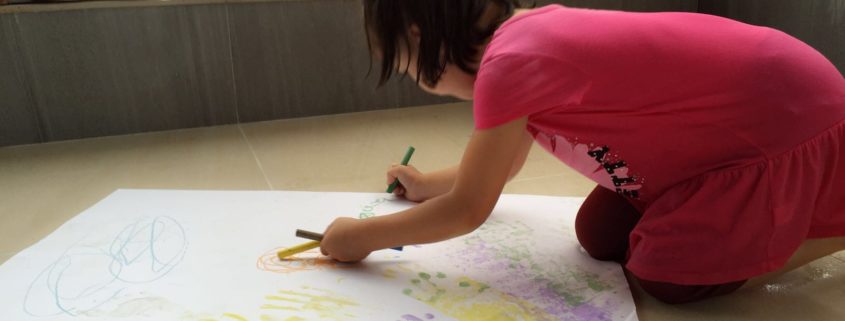Bruner’s Influence in Reggio: One of many “Layers of Science”

Today, I was teaching my intern teacher about how activities should be presented to children. I told her that “hands-on experience is first, then drawing (visualizing), and if they can, go deeper like symbolizing, encoding 2D to 3D, etc.” While I was studying Reggio (and also when I visited Reggio Italy), I heard many people quote Loris Malaguzzi, saying, “Every project starts with drawing.” This is a very simple instruction, yet instructions are very rare in Reggio way. Why would someone who rarely instructs, choose to emphasize this point? For a while, I didn’t understand why drawing was supposed the first step to do after having a particular experience. But, when I learned about Bruner and his theories on constructivism, I could see how this was his influence.
Essentially, Bruner argued that children construct their knowledge from adding “former knowledge” + “current experience.” Children have an in-born understanding of the “scientific method.” (They observe, question, form a hypothesis, test it, gather data, and develop a theory that they re-test until satisfied it is “true”). Learning is a very active, internal process, and children must be given time and space to discover the answers for themselves using this internal process.
Bruner argued there were “3 Modes of Representation”; in order of difficulty, they are: visual, words, symbols. The sequence of learning was incredibly important, as learning out of sequence will make learning much more difficult.
Let’s say you wanted children to understand the concept of “odd numbers.” You could hold up flashcards 1,3,5,7 and tell them with words and show number symbols 1-3-5-7 and say “these are odd numbers.” How many five year olds will understand? Will be able to predict 13 is also odd? Most likely none. This kind of word/symbolic explanation is useless to a child who hasn’t had the experience of working with odd numbers. But if you give children beans (or blocks or cups or whatever) and ask them to sort them into two groups, they will always find they have one left out, or one group with too many. They can draw this on graph paper to help them remember what they did before, and visualize their learning. With some testing and re-testing, and comparing visual aids, they can easily understand 13 will also be odd, as would 21 etc.
This is why “visualizing” information is the first critical step to the learning process, especially at this age.
People often ask me, “Mabo, what exactly IS Reggio?” It’s really hard to give one short simple explanation; but, one of my answers for this question is “layers of scientific research.” Reggio ideas are inspired by all the past and present scientific knowledge gained from Piaget, Vygotsky, Erikson, Bruner, Dewey, Fröbel, Bronfenbrenner, Gardner, and so on.



Leave a Reply
Want to join the discussion?Feel free to contribute!